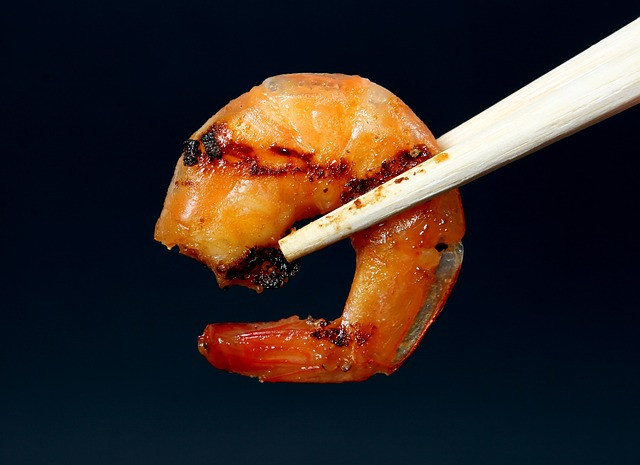There is a large inter-individual variability in how people respond to intermittent fasting (IF). Genetics, lifestyle choices, and state of health… all play a role in helping you achieve your goals.
But for the most part, we can only estimate what will happen when a person hops on an intermittent fasting plan using the 16/8 plan. The body has a set of predictable metabolic events to intermittent fasting that profoundly impact one’s health and weight. Intermittent fasting can significantly improve mental health, life expectancy, cognition, hypertrophy, and so on.
We will break down these responses into five stages of intermittent fasting here.
The Five Stages of Intermittent Fasting (using the 16/8 Plan)
According to Harvard professor Dr. George Cahill, all stages of intermittent fasting are defined by a timeline. It is important to discuss the body’s principal sources of energy:
- Glucose:-The body’s main source of energy
- Triglycerides:-The body converts any calories it doesn’t need into triglycerides, a type of fat
The body stores carbohydrates in the form of glycogen. It is a molecule that contains glucose chains and water. Glycogen is broken up into glucose molecules that are sent into the bloodstream.
The body breaks down triglycerides from fat cells once glycogen is low enough. This produces fatty acid chains and glycerol. These are then used by the body to convert into glucose for the brain.
With that out of the way, let’s discuss the five major stages of intermittent fasting here.
Stage 1: 0-4 Hours
Also known as the fed state, this stage of intermittent fasting starts within the first four hours of eating. The body has access to a lot of glucose. Of course, assuming that the last meal consisted of ample carbohydrates and proteins.
Insulin is released when blood sugar levels rise. Insulin blocks the enzyme responsible for breaking down stored fat.
Eating more carbohydrates and proteins triggers the nutrient hormone. The body starts storing some of the supplied energy for later.
For obvious reasons, the body needs energy even when you are not eating. This is why the body stores excess glucose as triglycerides in fat cells or as glycogen in the liver.
Note:- You’ll often hear experts refer to this stage as an anabolic stage, or growth period. It’s when the body has access to excess nutrients that it can use for energy or building lean muscle mass.
At the end of this phase, the body will gradually run out of glycogen in the liver. This will prompt the search for an alternative source of energy.
Most of the energy will now come from stored fat. Note:- If you eat a low-carbohydrate meal, the glycogen stores would deplete faster. As a result, your body will turn to stored fat earlier.
The second stage of fasting is useful for preventing chronic diseases. High insulin levels cause the body to retain salt (which stores more water weight).
Low insulin levels can prevent diseases like diabetes, cardiovascular disease, and inflammatory disease.
For this reason, intermittent fasting works best if the fasting window is maintained for at least 16 hours.
With insulin down, the body releases hormones like cortisol, adrenalin, glucagon, and HGH. These hormones tell the body to derive more energy from fat stores.
Important Terms
- HGH (or human growth hormone) plays a role in building and repairing for muscle growth
- Cortisol is nature’s alarm system
- Glucagon controls glucose levels in the blood
- Adrenaline prepares the nervous system to fight or flee.
Stage 3: 16-30 Hours
The third stage of intermittent fasting is known as gluconeogenesis. It’s a process that allows the liver to synthesize new glucose from protein.
It’s worth mentioning that the body is not in full ketosis during this time and glucose is needed. With glycogen levels depleted, the liver uses protein to make more glucose.
Don’t worry, though. This protein does not come from lean tissue because of the activation of autophagy.
Autophagy is when the body recycles defective proteins and organelles. Health benefits include the removal of pathogens and prevention of atypical protein accumulation. The body rebuilds cell parts from amino acids obtained by breaking defective proteins.
It’s important to discuss an important detail here.
Many obese individuals carry an excess amount of protein. It’s bad because protein accumulation may cause cancer and polycystic ovary syndrome.
Intermittent fasting helps the body break down the excess but and protein. This process is regulated by the nutrient sensors such as AMPK, insulin, and mTOR.
Stage 4: 2-7 Days
After we are in the fourth stage of intermittent fasting, we are entering into a state of prolonged fasting. This stage is often referred to as ketosis.
Once ketosis is fully activated in the body, the brain is fed purely based on fat energy sources.
The brain still uses glucose for energy, which falls short after fasting for two days. The liver has to convert the body fat to produce ketones.
This is where it gets interesting. Fatty acids are unable to cross the blood-brain barrier. This process is responsible for providing at least 75 percent of the energy to the brain.
People in a state of ketosis can focus better and concentrate for longer. Moreover, ketones can have powerful anti-inflammatory effects. These make you more insulin sensitive. This is a good thing for individuals at risk of developing diabetes.
Important note:- There is a big difference between ketosis and ketoacidosis. Ketosis uses ketones for fuel. Ketoacidosis is high acidity in the blood to high ketone levels. This could be a life-threatening problem for many people. It is worth consulting your doctor to ensure you don’t hurt yourself.
In this stage, the body’s ghrelin levels are low. Consequently, people report feeling less hungry.
Prolonged fasting can reduce IGF-1 levels in the body and PKA activity in various cells. IGF-1 is very similar to insulin and promotes growth in most cells throughout the body. IGF-1 triggers signaling pathways, including the P13K-Akt pathway that helps with cell survival and growth.
PKA has been known to activate the mTOR pathway.
Intermittent fasting reduces IGF-1 and PKA, which leads to the breakdown of older cells and proteins. Animal studies have shown that prolonged stress reduces IGF-1 and PKA. This, in turn, reduces stress and regenerates blood cell stem cells.
The Timeline of Each Stage Depends on Your Fed-Fast Cycle
We prepared this guide using the popular 16/8 diet plan. It is effective at weight loss – within the safety margins.
The five stages of intermittent fasting depend on your approach to fasting. You can experiment with meal timing and frequency to decide how long the intermittent fasting should last.
However, if your target is weight loss, you can combine intermittent fasting with the keto diet.
The goal is to deplete your glycogen stores and force the body to use stored fat for energy.
Moreover, this combination of intermittent and keto fasting has numerous health benefits.
Does intermittent fasting have to be 16/8?
No. The 16/8 plan is just one of several approaches to intermittent fasting.
Please note that if you’re just getting started with intermittent fasting, we recommend taking things slow. Instead of fasting for 2 days straight, consider fasting for 12 hours and see how it impacts your body.
You can slowly ramp things up by adding 1-hour increments every few days. You can try the 5:2 plan with a fasting cycle of two consecutive days and eating normally for five days each week.
Pro tip: Drink lots of water and unsweetened tea or coffee to suppress your hunger.
And remember, talk to your medical provider if you have any health issues before trying intermittent fasting.
How to Break a Fast – Stages of Intermittent Fasting
There are many ways of breaking a fast. We’ve done a detailed guide on the best foods to eat here. But we’ll give a brief summary here on the best way to break your fast.
The trick is to avoid foods that could prove to be tough on your body. In general, you might want to avoid the following foods:
- Nuts and butters
- Eggs
- Dairy products
- Alcohol
- Certain kinds of red meats
You should be able to resume eating these food groups without stressing out your digestive tract within six hours of ending the fast.
A good idea to break the fast is to start off in a state of hydration. This means drinking lots of water until you are properly hydrated. Prepare a salad comprising of salad and parsley. You can add a tablespoon of virgin olive oil if you prefer.
It is highly recommended to stick to fish or poultry for protein sources. Don’t go overboard with the protein sources.
Next, you should cook above-ground vegetables in natural fats like coconut oil.
Quench your hunger with an avocado.
This particular protocol will help you break the fast without disorienting your digestive tract. With that said, if you’re still experiencing problems you can consider adding a teaspoon of psyllium – a type of fiber – in a cup of water. Some users suggest that it can help with their food cravings.
It’s worth noting that you should avoid alcohol entirely, especially binge drinking when breaking a fast of more than 6 hours. This is because alcohol could trigger ketoacidosis, a state that will increase the concentration of ketones in the blood.










